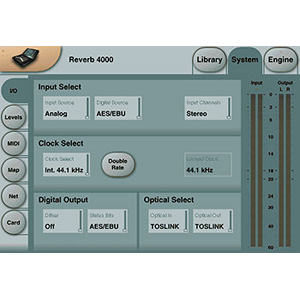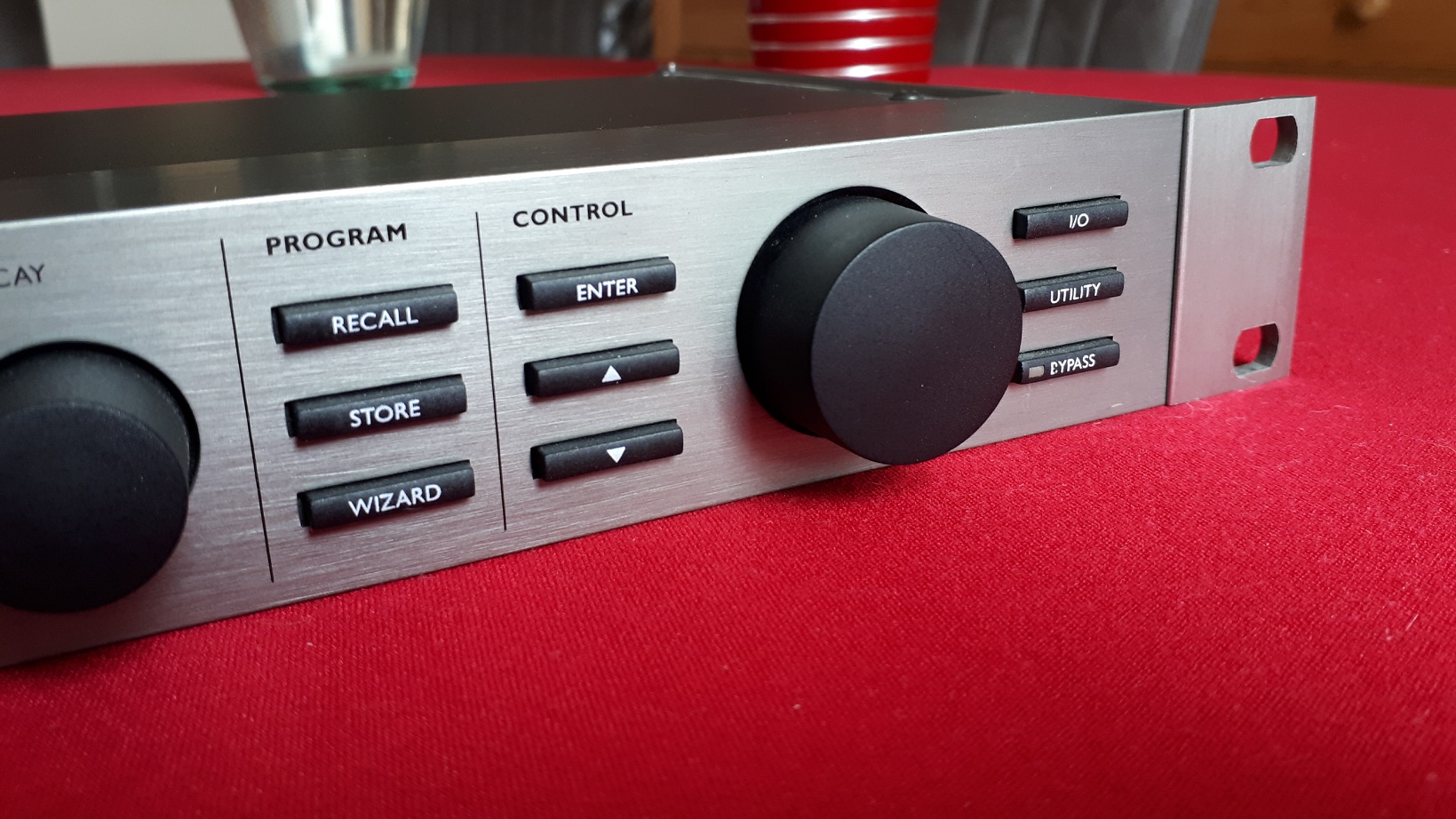- Tc Electronic T2 Reverb
- Tc Reverb 4000 Used
- Tc Electronic T2 Reverb Pedal
- Tc Electronic Reverb 4000 Software Mac Pro
- Tc Electronic Reverb 4000

Mar 01, 2005 TC Electronic has brought back those classic, genuine and full sounds, while making the device extremely user-friendly. Actually, most people who tried this unit with me, started early in their careers with the EMT 140 plate reverb, or the digital EMT. Jan 01, 2004 April 1, 2004. TC Electronic announce a new version of software for Reverb 4000, as well as the Macintosh-compatible version of the TC ICON editor program used to control it. The Version 1.10 update and Mac ICON editor will be available as free downloads in April from www.tcelectronic.com. Based on user requests, the Reverb 4000 software update includes emulations of the 20 most sought. When you connect the USB cable to the 4000, the software detects it and loads all presets and setup data. The ICON pages filled up (vertically) my 768 X 1028 flat-panel computer monitor with the virtual sliders and buttons, which are visible from across the room under any lighting. ICON can control up to eight TC Reverb 4000 units on the USB bus. The Reverb 4000 is a Single Engine Stereo version of System 6000 - featuring the best reverbs and presets from System 6000 and M5000 plus emulations of immortal classics. Reverb 4000 is also the first stereo reverb capable of rendering credible space onto two discrete sources, or to truly process a composite stereo source.
RatingsPros:Stellar reverb tones. Exceptional build quality. Simple interface. Real-time control via MASH footswitches. Deep editing—but only if desired. Bargain price. Cons: It’s reet, but not petite. Street: $249 TC Electronic Hall of Fame 2 X4 Reverb tcelectronic.com |

Tc Electronic T2 Reverb
The Hall of Fame 2 X4 Reverb from TC Electronic is big in every regard. It’s 9' wide and 5.5' deep. It weighs nearly three pounds. And, most important, it delivers excellent studio-quality reverb (and many ways to modify and control it) at a sensible stompbox price.
When I unboxed the HOF 2 X4, I thought, “Wow, this is for players with a serious commitment to reverb,” assuming that its cost would be as imposing as its enclosure. But no—the China-built device lists for $249, which is a remarkably low price for such a beautifully designed and manufactured pedal packed with great sounds and a host of unique TC Electronic extras.
Avenged Fourfold
Basically, the 2 X4 is a maximalist expansion of TC Electronic’s popular Hall of Fame 2 reverb pedal. You get 10 factory settings and six user memory slots settings, with eight stored patches accessible via four hefty footswitches. (The original Hall of Fame 2 has eight algorithms, three user slots, and a $130 street price. Here you have the power of four HOF 2s for a bit less than double the price.)
This bulky pedal may be a non-starter for players committed to cramming the maximum number of devices onto their pedalboards. Yet it’s gratifying to interact with a piece of gear with an old-school sense of scale. The oversized knobs feel great in your fingers, and their functions are easy to discern, even onstage.
What Fresh Hall Is This?
These reverbs are lush and detailed. They bloom attractively and maintain their richness through their final decays. There’s no hint of digital graininess or annoying resonance, and they don’t fatigue your ear after a few minutes. Reverb can be a matter of taste, and some might prefer crisper, simpler textures to these thick, creamy ones. But if any other pedals provide superior reverb in this price range, I’m unaware of them.
Tc Reverb 4000 Used
My first demo clip features a grab bag of electric guitar tones, recorded in mono with the 2 X4 between guitar and amp. (Some settings are factory algorithms, and some are weirder concoctions.) But for the true acid test, check out the remaining 10 clips—one for each of the factory settings. Here’s why they’re more revealing: I play acoustic guitar, which has vastly greater frequency and dynamic range than anything emerging from an amp speaker. I hooked up the 2 X4 as an outboard effect, with a mono guitar signal going in, but a stereo signal coming out. The decay and tone knobs are parked at noon, and there’s no pre-delay. Again: impressive, especially at this price. If you told me these tones were produced by a far pricier outboard unit, I’d probably believe you.
Editing Is Optional
These default tones are more functional than freaky. The lo-fi setting actually sounds quite rich. The modulation setting is relatively subtle. And, speaking of subtle, there’s the ambient setting: a mostly-dry blend that’s perfect for adding just a touch of air to close-miked cabinets. The one oddball is shimmer—an octave-up effect whose transpositions are remarkably smooth and detailed.
But you can get weirder if you want, thanks to TCE’s free TonePrint software for Mac, PC, and iOS. If you just pay attention to TC’s marketing, the feature attraction here is the ability to download presets created by celebrity guitarists. Well, okay. But if you’re enough of a sound sculptor to edit reverb via software, the truly exciting part is access to a deep-yet-user-friendly editor that can customize tones in exquisite detail. The TonePrint system works like a charm. To edit and load sounds from a computer, you just connect the included USB cable. From an iOS device, no cables are needed. It’s not a wi-fi system, as on, say, Eventide’s H9 pedal. Instead, you hold your phone or tablet near your pickups. The device emits an audio tone, which the 2 X4 interprets as patch parameters. The system is fast, fun, and, in my experience at least, flawless.
It can also be nonexistent, if you prefer. All the complex stuff is only visible if you opt to connect to an external device. There are no confusing labels or multi-function knobs on the hardware. Many, if not most, players will get everything they need just by spinning the big, obvious knobs. That’s why I give the HOF 2 X4 a maximum “ease of use” rating, even though its software editing can get quite complex. The pedal is only as tricky as you want it to be.

TC Electronic’s TonePrint software permits deep editing, including of the roles of the touch-sensitive MASH switches.
Monster MASH
The HOF 2 X4 runs on standard 9V power supplies, and it comes with an adapter. Rear-panel functions include old-school MIDI I/O jacks, buffer bypass, and a 100 percent wet option for using the pedal as a send effect. There’s also a 1/4' expression pedal jack, but you may never need it—which brings us to a final killer feature.
The pedal employs TC Electronic’s signature MASH switching. The four footswitches aren’t simply on/off toggles, but pressure-sensitive controllers you can assign to most edit parameters. You might, for example, click on a reverb patch, and then control its wet/dry blend via foot pressure. Or you could pilot the decay time, the modulation depth and rate, and so on. You can assign up to three parameters per switch. Again, it’s your choice whether to choreograph complex controller scenarios, or just ignore pressure sensitivity.
The Verdict
Everything about the Hall of Fame 2 X4 Reverb is exceptional. The reverbs are rich and varied. The large controls and simple interface are a delight. The deep editing options and built-in MASH control are fantastic features, but you can pretend they don’t exist if you want to keep it simple. The build quality is remarkable for the price—and the price is pretty damn remarkable as well.
Westlake Village (June 7, 2004)–Last week, TC Electronic posted software version 1.11 for Reverb 4000, as well as the Macintosh OSX version of the TC ICON editor program used to control it. The Version 1.11 update and Mac ICON editor can be downloaded free of charge from the TC web site at www.tcelectronic.com/reverb4000.
Driven by user requests, the Reverb 4000 software update includes emulations of the 20 most sought-after presets from TC Electronic M5000, including “Gold Plate,” “M5000 Hall,” and “GM Hall.” While the preset names remain the same, the sample rate has been increased to 96 kHz. The presets are also now integrated with Reverb 4000’s advanced search engine, which gives easy access to classics as well as the latest reverb technology.
TC ICON software, which ships with Reverb 4000, enables control of the unit directly through the USB port of a Macintosh- or Windows-based computer. The new Mac OSX (Panther and Jaguar) version of the TC ICON software editor makes it easy to operate Reverb 4000 from a digital audio workstation.
Tc Electronic T2 Reverb Pedal
Reverb 4000 is a true stereo reverb with a range that spans from new state-of-the-art reverbs to world-renowned classics as well as algorithms from its predecessors–System 6000 and the M5000. Reverb 4000’s feature set includes instant front panel access for live use, 44.1 to 96 kHz sample rates and 24-bit processing, 24-bit AES/EBU, Tos-Link, S/PDIF, ADAT and analog inputs and outputs, and the ability to connect via USB to a Mac or PC.
Tc Electronic Reverb 4000 Software Mac Pro
TC Electronic, Inc.
www.TCElectronic.com
Subscribe
Tc Electronic Reverb 4000
For more stories like this, and to keep up to date with all our market leading news, features and analysis, sign up to our newsletter here.



